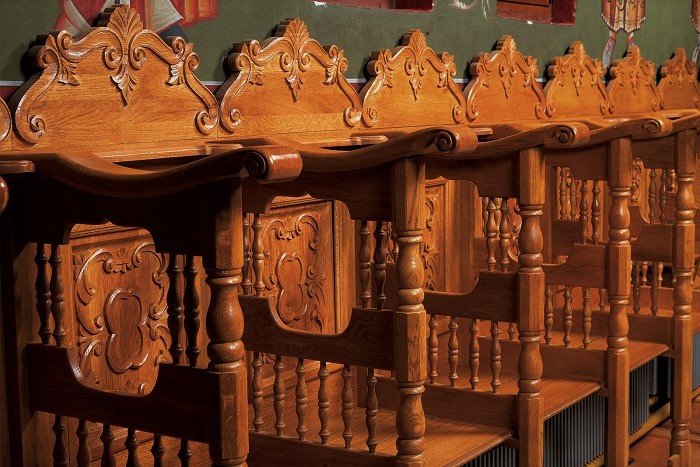

Compunction and tears are engendered by the outwards postures of the body; that is, when one prays with head uncovered; when he has the attitude of a condemned man standing before the judge; when he smites his breast like the Publican; when he keeps his eyes inclined downwards; when he gathers his thoughts in his heart; when he stands upright in his Stasidion. Indeed, Stasidia were designed for this very purpose, to support the arms of Christians and to maintain them in the posture of one praying throughout the time that they are standing in Church. This would be impossible if there were no Stasidia, since the arms of those at prayer would become weary if held up to God for a long period of time. That lifting the hands in prayer was a custom of the Prophets and Apostles is attested, on the one hand, by the Divine David, who says, “Let my prayer be set forth before Thee as incense, the lifting up of my hands as an evening sacrifice,” (Ps. 140:2) and, on the other hand, by the great Paul, who says, “I desire therefore that men pray in every place, lifting up holy hands, without wrath and disputing” (1 Tim. 2:8). To put it briefly, Stasidia sustain Christians in Church in the form of one crucified, and through such a form of the Cross Christians overcome the passions and the demons, invoking the help of the crucified Savior. In this way, Moses, held up by Hur and Aaron in the form of a Cross, overcame the Amalekites (Exo. 17:11-12). These outward and venerable postures, I say, give rise to compunction and tears in prayer. For the soul within conforms to the outward postures of the body, according to St. John the Ladder, who says: “The soul imitates the activities of the body, is molded in accordance with what the whole body does, and is made to conform thereto” (Ladder, 25). (Christian Morality pg. 492)



